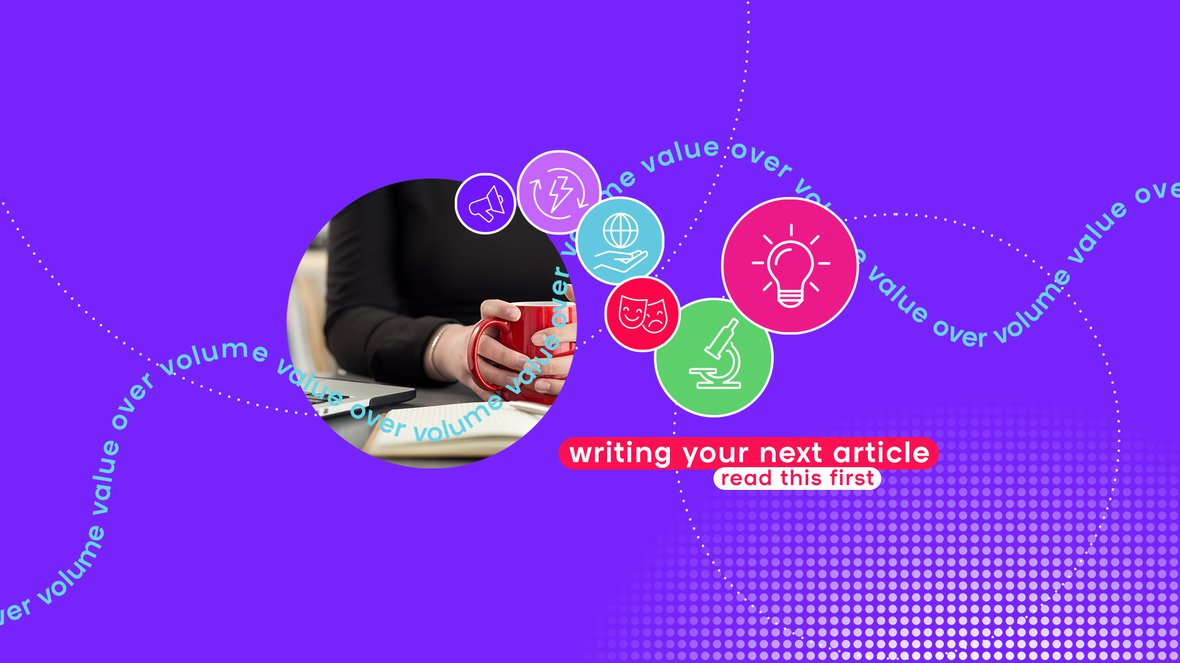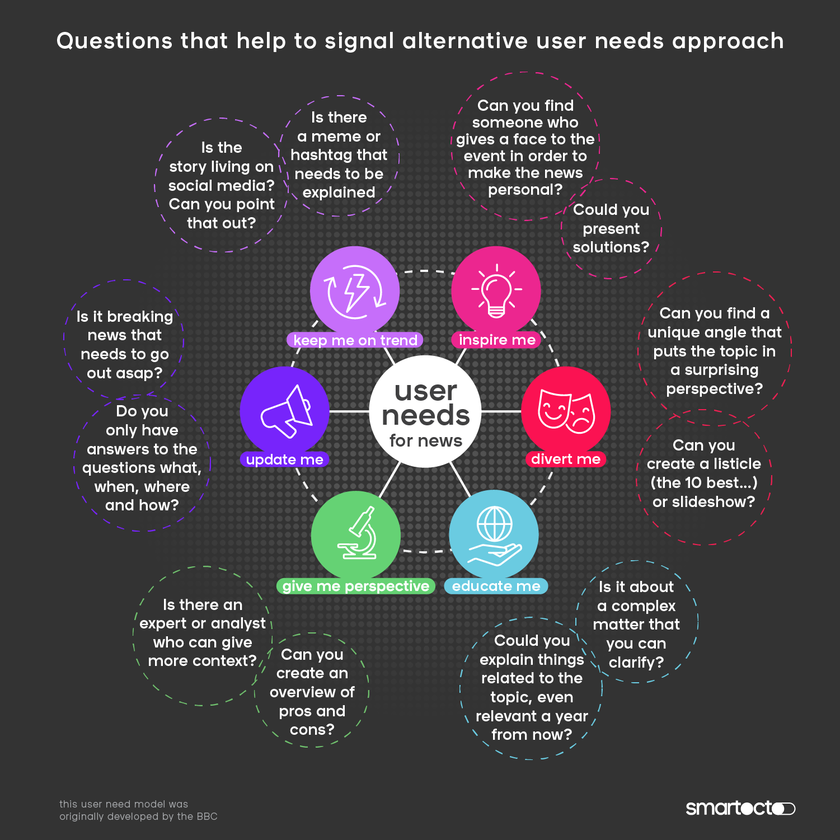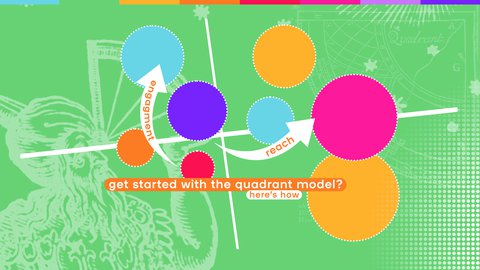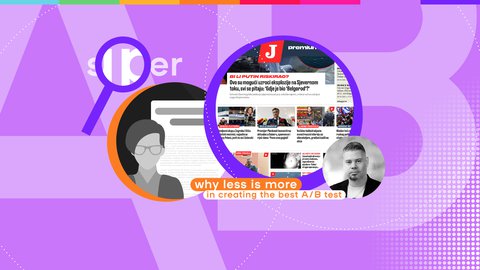Do you know for sure that you’re actually helping your audience when you set about writing your next story? Here’s how the User Needs for News model can point you in the right direction.
It’s a regular day in the newsroom. Stuff’s happening. Coffee’s being drunk. There’s an ambient buzz of keyboards tapping and the ping of message notifications.
And then - as happens every day - something newsworthy presents itself.
We jump to it, report it, publish it or even push it.
But maybe, just maybe, we should pause for a moment and consider if we’re being too hasty (you might even come to the conclusion that not writing the story at all is the best choice).
Your new mantra: value over volume
The default position of newsrooms has long been to publish Update Me articles.
What are those? Well, chances are they’re what you’ve been doing. The Update Me approach is the classic who, what, where, when formula of news - and it does exactly what it says. If it’s a news story, a live blog, a summary or write up, chances are it falls under this category.
There’s not necessarily a problem with this. Breaking News is, after all, synonymous with journalism. But by being on auto-pilot, there’s a real chance you’re missing out on vital opportunities to build your audience engagement. The audience often desires something else when it comes to consuming the news.
And, by pausing for a moment you might just end up doing less, but getting more. You could work more efficiently and effectively, so your readers get value over volume. Pretty intriguing, right?
Before you start doing what you usually do, consider these two things:
1. Decide which user need you should be trying to satisfy
In the BBC’s User Needs for News model, Dmitry Shishkin identified six. Update Me is one for sure, but the other five are where it starts to get really interesting - and where you typically find the drivers of engagement that most newsrooms rely on from a business model point of view (subscriptions, memberships etc).





